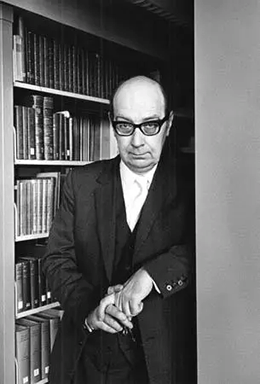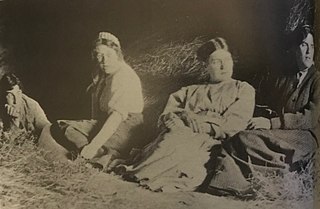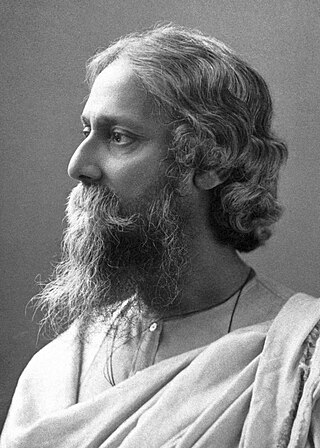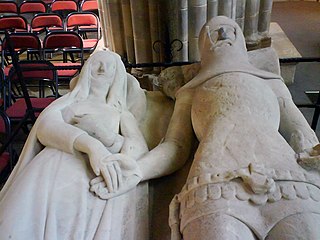Related Research Articles

Philip Arthur Larkin was an English poet, novelist, and librarian. His first book of poetry, The North Ship, was published in 1945, followed by two novels, Jill (1946) and A Girl in Winter (1947). He came to prominence in 1955 with the publication of his second collection of poems, The Less Deceived, followed by The Whitsun Weddings (1964) and High Windows (1974). He contributed to The Daily Telegraph as its jazz critic from 1961 to 1971, with his articles gathered in All What Jazz: A Record Diary 1961–71 (1985), and edited The Oxford Book of Twentieth Century English Verse (1973). His many honours include the Queen's Gold Medal for Poetry. He was offered, but declined, the position of Poet Laureate in 1984, following the death of Sir John Betjeman.

Frances Crofts Cornford was an English poet.
—From Robert Frost's "Stopping by Woods on a Snowy Evening", first published this year in his collection New Hampshire

Bengali literature denotes the body of writings in the Bengali language and which covers Old Bengali, Middle- Bengali and Modern Bengali with the changes through the passage of time and dynastic patronization or non-patronization. Bengali has developed over the course of roughly 1,300 years. If the emergence of the Bengali literature supposes to date back to roughly 650 AD, the development of Bengali literature claims to be 1600 years old. The earliest extant work in Bengali literature is the Charyapada, a collection of Buddhist mystic songs in Old Bengali dating back to the 10th and 11th centuries. The timeline of Bengali literature is divided into three periods: ancient (650–1200), medieval (1200–1800) and modern. Medieval Bengali literature consists of various poetic genres, including Hindu religious scriptures, Islamic epics, Vaishnava texts, translations of Arabic, Persian and Sanskrit texts, and secular texts by Muslim poets. Novels were introduced in the mid-19th century. Nobel laureate Rabindranath Tagore is the best known figure of Bengali literature to the world. Kazi Nazrul Islam, notable for his activism and anti-British literature, was described as the Rebel Poet and is now recognised as the National poet of Bangladesh.
Nationality words link to articles with information on the nation's poetry or literature.
Nationality words link to articles with information on the nation's poetry or literature.
Nationality words link to articles with information on the nation's poetry or literature.
Nationality words link to articles with information on the nation's poetry or literature.
Nationality words link to articles with information on the nation's poetry or literature.

Victa is an Australian manufacturer of outdoor garden equipment, including petrol, electric, and battery-powered lawn mowers, edgers, trimmers, and chainsaws. The brand is best known as a manufacturer of rotary lawn mowers. In the early 1960s the company also built light aircraft, notably the Victa Airtourer, and project homes.
Raymond Laurence Brett was Professor of English at University of Hull and a friend of Philip Larkin. He produced an edition of Wordsworth and Coleridge's Lyrical Ballads which went through two further editions. Some of his many other publications are listed below.

"An Arundel Tomb" is a poem by Philip Larkin, written and published in 1956, and subsequently included in his 1964 collection The Whitsun Weddings. It describes the poet's response to seeing a pair of recumbent medieval tomb effigies with their hands joined in Chichester Cathedral. It is described by James Booth as "one of [Larkin's] greatest poems". It comprises 7 verses of 6 lines each, each with rhyme scheme ABBCAC.
Edappally Raghavan Pillai was an Indian poet of Malayalam literature and a close associate of Changampuzha Krishna Pillai. The pair, the front-runners of romanticism in Malayalam, was considered by many as the Shelley and Keats combination of Malayalam poetry. Kesari Balakrishna Pillai compared Pillai to the Italian poet, Giacomo Leopardi.
Throughout the life of the poet Philip Larkin, multiple women had important roles which were significant influences on his poetry. Since Larkin's death in 1985, biographers have highlighted the importance of female relationships on Larkin: when Andrew Motion's biography was serialised in The Independent in 1993, the second installment of extracts was dedicated to the topic. In 1999, Ben Brown's play Larkin with Women dramatised Larkin's relationships with three of his lovers, and more recently writers such as Martin Amis, continued to comment on this subject.
Kumar Roy (1926–2010) was a Bengali theatre actor, director and playwright. In 1983 he won the Sangeet Natak Akademi Award. He was associated with the group Bohurupee. In 1989 he directed the re-creation of the classic play Nabanna (1948). He was the president of the PashchimBanga Natya Akademi from 2006 till his death in 2010. Kumar Roy was also professor of drama at Rabindra Bharati University, Kolkata and visiting professor at Sangeet Bhavan, Visva-Bharati, Santiniketan.
Needler Hall was a hall of residence of the University of Hull, located on Northgate in Cottingham, East Riding of Yorkshire, England. Originally a large private house built in the 18th century, it was acquired, along with Thwaite Hall, by the newly established university college in 1928. It was named in honour of Frederick Needler, of Needler's, who was a major benefactor of the university college.
Andhare Alo also called The Influence of Love was a 1922 silent film from the Bengali Film industry and a debut production from the Taj Mahal Films, Calcutta. Based on a short story of the same name "Andhare Alo" by Saratchandra Chatterjee, it was directed by Sisir Bhaduri and Naresh Mitra. The cinematographer was Noni Gopal Sanyal. The cast included Sisir Kumar Bhaduri, Naresh Mitra, Jogesh Choudhury and Durga Rani. The film was appreciated by the critics for its melodramatic content and was claimed to be a "huge hit" at the box-office.
Winifred Dawson was a librarian, biographer and close friend of Philip Larkin.
Jean Hartley was an English autobiographer and publisher. She and her husband George Hartley co-founded the publication company Marvell Press in 1954, which published volumes of poetry. They also founded the record company Listen Records. After Hartley separated from her husband and left Marvell Press, she earned degrees in English Literature and Victorian Studies from the University of Hull in the early 1970s. She taught English at her former secondary school and lectured at the Hull College of Further Education. In 1995, Hartley was made vice-chairman of the Philip Larkin Society to promote the life and works of her friend and poet Philip Larkin. She was on the steering committee of the Larkin 25 committee in 2010. The Hull History Centre holds a collection of items on Hartley's life and career.
"Aubade" is a poem by the English poet Philip Larkin, first published in 1977. The theme of the poem is the terror of death. The title refers to the poetic genre of aubade, poems written about the early morning.
References
- ↑ Larkin, Philip (2004). Collected Poems. Edited by Anthony Thwaite. London: Farrar, Straus & Giroux, ISBN 978-0-374-52920-8
- ↑ Brennan, Maeve (2002). The Philip Larkin I Knew, p. 64. Manchester University Press, ISBN 978-0-7190-6276-6
- ↑ Chatterjee Sisir Kumar (2006). Philip Larkin: Poetry That Build Bridges. Atlantic Publishers & Distributors, ISBN 978-81-269-0606-2
- ↑ Rossen, Janice (1989). Philip Larkin: His Life's Work. University of Iowa Press, ISBN 978-0-87745-271-3
- ↑ Laville, Sandra (11 May 2002). "Larkin's lawnmower cuts it as a relic". The Telegraph. Retrieved 2 November 2021.
- ↑ McDonald, Guy (2004). Cadogan Guide: England, p. 836. New Holland Publishers, ISBN 978-1-86011-116-7